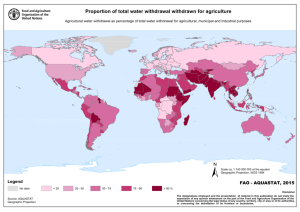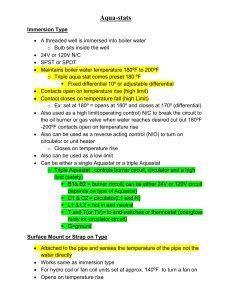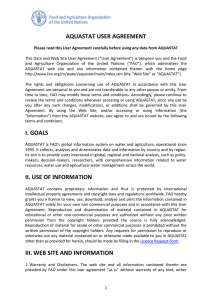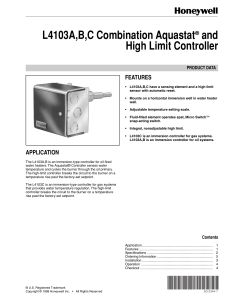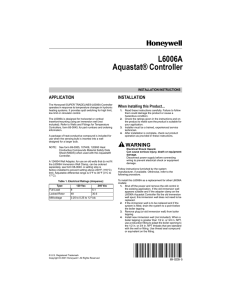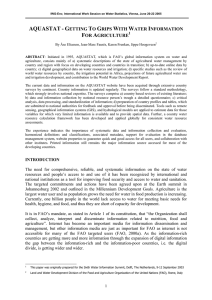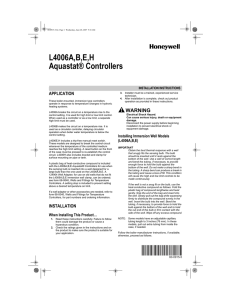AQUASTAT - Getting to grips with water information for agriculture Åse Eliasson
advertisement
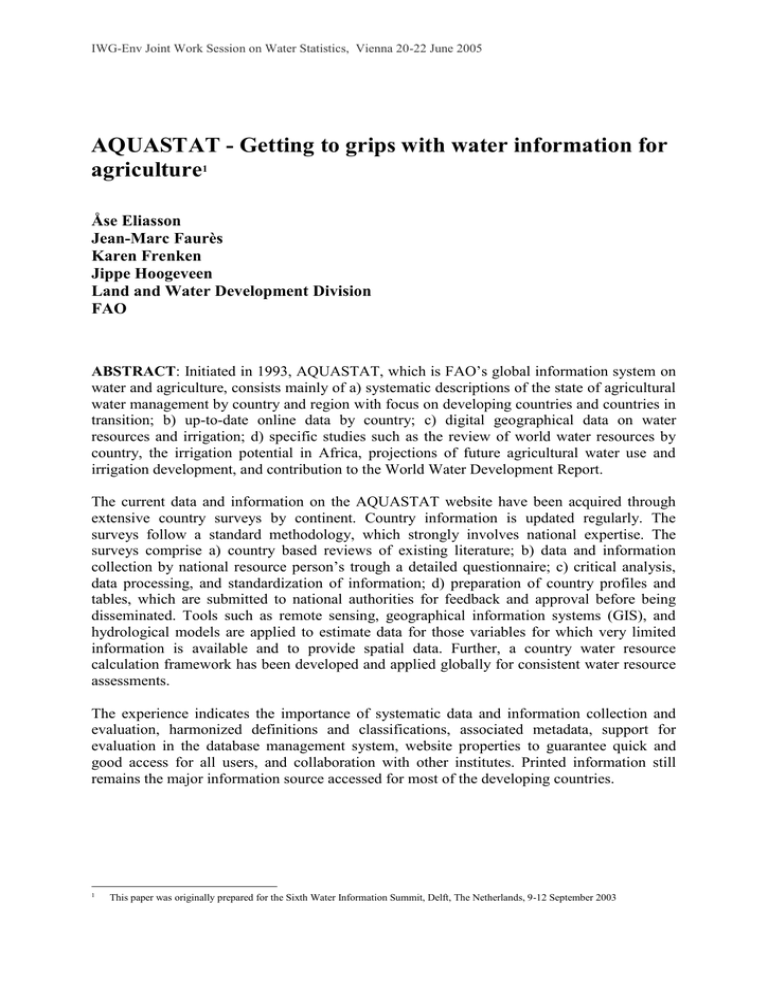
IWG-Env Joint Work Session on Water Statistics, Vienna 20-22 June 2005 AQUASTAT - Getting to grips with water information for agriculture1 Åse Eliasson Jean-Marc Faurès Karen Frenken Jippe Hoogeveen Land and Water Development Division FAO ABSTRACT: Initiated in 1993, AQUASTAT, which is FAO’s global information system on water and agriculture, consists mainly of a) systematic descriptions of the state of agricultural water management by country and region with focus on developing countries and countries in transition; b) up-to-date online data by country; c) digital geographical data on water resources and irrigation; d) specific studies such as the review of world water resources by country, the irrigation potential in Africa, projections of future agricultural water use and irrigation development, and contribution to the World Water Development Report. The current data and information on the AQUASTAT website have been acquired through extensive country surveys by continent. Country information is updated regularly. The surveys follow a standard methodology, which strongly involves national expertise. The surveys comprise a) country based reviews of existing literature; b) data and information collection by national resource person’s trough a detailed questionnaire; c) critical analysis, data processing, and standardization of information; d) preparation of country profiles and tables, which are submitted to national authorities for feedback and approval before being disseminated. Tools such as remote sensing, geographical information systems (GIS), and hydrological models are applied to estimate data for those variables for which very limited information is available and to provide spatial data. Further, a country water resource calculation framework has been developed and applied globally for consistent water resource assessments. The experience indicates the importance of systematic data and information collection and evaluation, harmonized definitions and classifications, associated metadata, support for evaluation in the database management system, website properties to guarantee quick and good access for all users, and collaboration with other institutes. Printed information still remains the major information source accessed for most of the developing countries. 1 This paper was originally prepared for the Sixth Water Information Summit, Delft, The Netherlands, 9-12 September 2003
